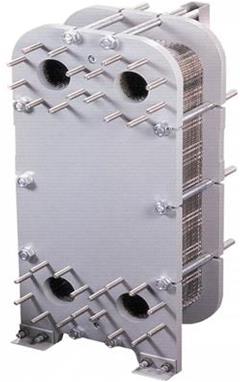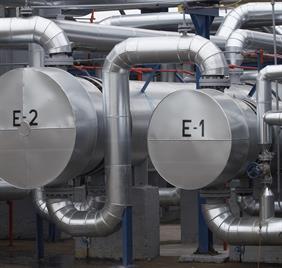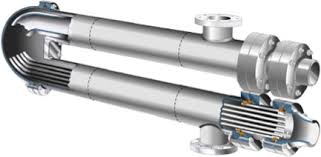Advantages and Applications of Stainless Steel Heat Exchangers
 Kinetic Engineering Corporation
Kinetic Engineering Corporation
Stainless metallic warmth exchangers are critical additives used throughout various industries for green thermal switch. These structures provide corrosion resistance, sturdiness, and hygiene, making them appropriate for each commercial and sanitary packages. Whether in food processing, chemical industries, or HVAC structures, stainless steel heat exchangers carry out exceedingly well below strain and temperature fluctuations. Spiral warmness exchangers, a form of warmth exchanger with a compact and efficient design, frequently make use of chrome steel for more suitable overall performance and sturdiness. In this put up, we explore how chrome steel and spiral configurations improve electricity efficiency, reduce renovation charges, and guide sustainable engineering.
Why Stainless Steel is Ideal for Heat Exchangers
Stainless metallic is preferred in warmth exchangers due to its resistance to corrosion, oxidation, and scaling below high temperatures. This fabric continues its integrity even in competitive environments involving acids or seawater. Its non-reactive nature guarantees that approaches involving meals, prescription drugs, or chemical compounds continue to be uncontaminated. Furthermore, stainless-steel is structurally robust, minimizing disasters and downtime. When spiral warmth exchangers are manufactured from stainless-steel, the resulting gadgets deliver a superior aggregate of reliability and performance, assembly the wishes of excessive-demand operations.

Understanding the Working Principle of Spiral Heat Exchangers
Spiral warmness exchangers are designed with coiled channels that permit two fluids to float in a counter-modern-day manner, maximizing thermal switch. This unique geometry guarantees high turbulence and heat switch even at low drift charges. Stainless metallic production enhances the sturdiness and corrosion resistance of spiral warmth exchangers, making them suitable for managing aggressive or fouling fluids. The layout also helps smooth cleansing and maintenance, particularly in packages in which hygiene and operational performance are essential.
Thermal Efficiency of Stainless Steel Heat Exchangers
Stainless steel warmness exchangers offer superior thermal conductivity and strength performance. Their cloth composition allows for skinny walls without compromising strength, improving heat switch fees. Spiral warmness exchangers made from stainless steel extend this benefit because of their non-stop spiral route, which ensures even distribution of temperature and consistent fluid contact. This efficiency enables industries reduce power consumption and operational charges while accomplishing quicker thermal response times.
Applications in the Food and Beverage Industry
Stainless steel heat exchangers are crucial inside the meals and beverage zone where sanitation and temperature manipulate are priorities. They are used for pasteurization, sterilization, and CIP (smooth-in-place) structures. Spiral warmness exchangers, mainly while crafted from chrome steel, are valued for his or her compact length, excessive hygiene standards, and ease of cleansing. The clean surfaces of stainless-steel face up to bacterial increase and help the stringent requirements of food safety standards.
Benefits for Chemical and Petrochemical Industries
The chemical and petrochemical sectors rely closely on chrome steel heat exchangers for their capacity to face up to corrosive chemicals and excessive-stress environments. Spiral warmth exchangers offer a compact solution for strategies related to viscous, particulate, or fouling fluids. Stainless metal’s resistance to chemical degradation guarantees long carrier life and less operational failures. Combined with the spiral layout, these exchangers offer green heat switch in techniques like condensation, reboiling, and waste heat recovery.

Role in HVAC and Renewable Energy Systems
Stainless metallic heat exchangers make a contribution notably to heating, ventilation, and aircon (HVAC) systems due to their strength efficiency and occasional protection requirements. Their capability to operate underneath fluctuating temperatures makes them best for geothermal and solar heating structures. Spiral heat exchangers, recognized for his or her compact shape, are smooth to integrate into tight spaces, making them appropriate for both business and residential HVAC systems powered by means of renewable power.
Resistance to Fouling and Scaling
One of the key benefits of stainless steel is its resistance to fouling and scaling, which regularly degrade heat exchanger performance. Spiral heat exchangers similarly reduce these problems due to the self-cleansing nature in their float direction. The turbulent drift generated in the spiral channels allows dislodge deposits and hold performance. In aggregate, stainless steel and spiral design minimize the need for chemical cleansing and make bigger the gadget’s existence span.
Compact Design and Space Efficiency
Spiral heat exchangers are famend for their compact, space-saving construction. When manufactured from stainless-steel, they keep a lightweight yet sturdy profile. This makes them perfect for mobile units, marine packages, or any setup where area is at a top rate. The included spiral channels get rid of the need for sizeable piping and aid modular designs, improving general machine flexibility without sacrificing overall performance or accessibility.
Easy Maintenance and Cleaning Capabilities
Stainless metallic surfaces are clean to easy and immune to biofilm accumulation, lowering the need for frequent maintenance. Spiral heat exchangers, with their unmarried-channel layout, are without problems accessed for inspection and guide cleaning if required. In many industries, clean-in-region (CIP) tactics are easily implemented because of the easy and durable surfaces of chrome steel. The low renovation requirement interprets to longer uptime and more price-powerful operation.
Environmental and Sustainability Benefits
The recyclability of stainless-steel makes it a sustainable preference for cutting-edge heat exchangers. Spiral warmth exchangers beautify this via lowering energy consumption through efficient heat switch. Stainless metal additionally has a longer provider lifestyles than different materials, reducing the frequency of replacements. By selecting stainless-steel heat exchangers in spiral shape, industries commit to environmentally responsible and electricity-green operations without compromising overall performance.

Comparative Cost Analysis and Long-Term Value
Although chrome steel warmness exchangers may have a better preliminary fee as compared to options, their long-time period cost is unequalled. Their sturdiness, reduced protection desires, and high efficiency bring about lower lifetime operational expenses. Spiral heat exchangers maximize this go back on funding by way of minimizing strain drops and enhancing thermal performance. Their mixed advantages justify the prematurely cost by way of delivering lengthy-lasting provider, strength financial savings, and less shutdowns through the years.
Conclusion: The Strategic Choice for Heat Exchange Solutions
Stainless metallic heat exchangers provide unmatched sturdiness, hygiene, and thermal performance, making them a advanced preference across more than one industries. When combined with the compact and tremendously green spiral design, these structures provide reliable performance, smooth preservation, and sustainability blessings. Spiral warmth exchangers fabricated from stainless steel constitute the future of warmth exchange technology, handing over long-time period fee, environmental compatibility, and strength savings. Whether for meals processing, chemical manufacturing, or renewable energy systems, deciding on stainless-steel heat exchangers ensures safe, efficient, and resilient thermal answers tailored to fashionable business needs.
Subscribe to my newsletter
Read articles from Kinetic Engineering Corporation directly inside your inbox. Subscribe to the newsletter, and don't miss out.
Written by

Kinetic Engineering Corporation
Kinetic Engineering Corporation
Kinetic Engineering supplies heat transfer and process equipment for industrial use. We have been a stocking distributor for Standard Xchange (previously ITT Standard/American Standard) since 1969, and we are proud to be the largest stocking distributor in the United States. Our complete heat exchanger product line includes shell and tube, plate and frame, brazed plate, spiral, double pipe/hairpin, and air cooled exchangers, all customizable. We also carry fired process heaters with outputs ranging from 0.5 to 60 million BTU per hour.